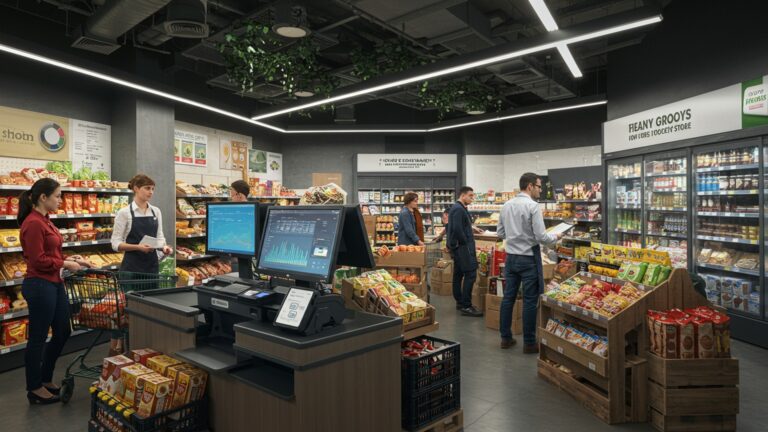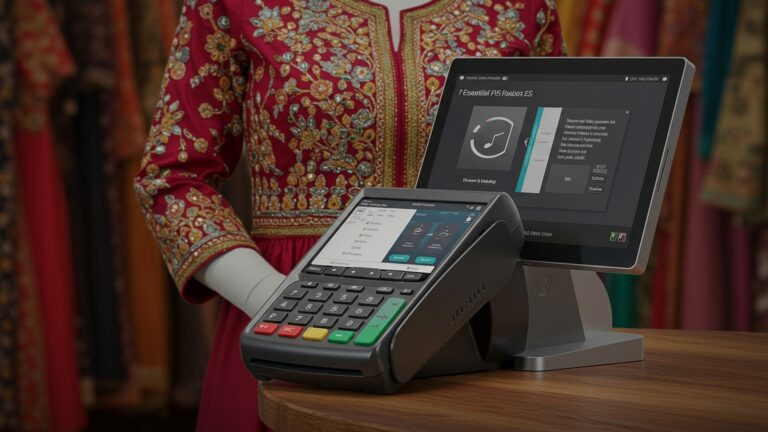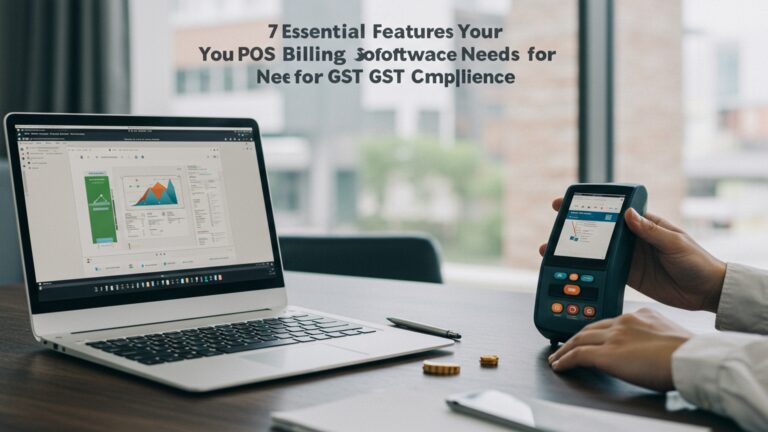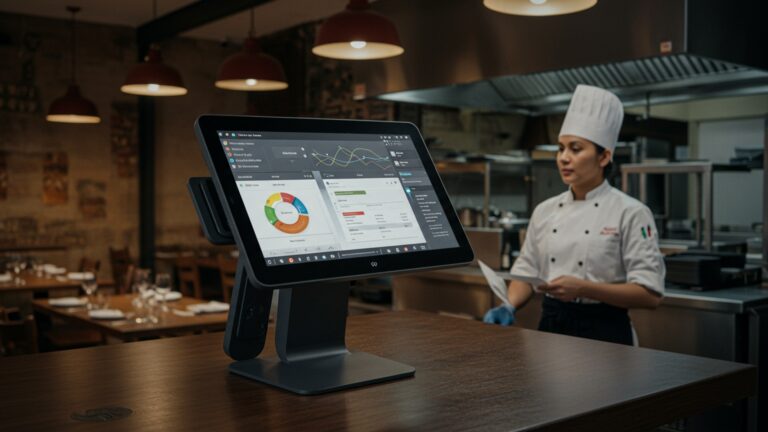How to Select and Implement POS Software A Comprehensive Guide for Business Success
The modern business landscape demands more than just transaction processing; it requires a strategic operational hub. Selecting robust pos software has evolved from a simple purchase to a critical investment impacting every facet of a company, from inventory management and customer relationship insights to streamlining omnichannel operations. With the rapid adoption of cloud-native solutions, mobile POS terminals. AI-powered analytics, businesses now leverage these systems for real-time data analysis, enhancing customer experiences through personalized recommendations and facilitating seamless contactless payments. A well-chosen system ensures scalability, optimizes resource allocation. provides actionable intelligence, differentiating market leaders by fostering efficiency and driving sustainable growth in a competitive digital economy.
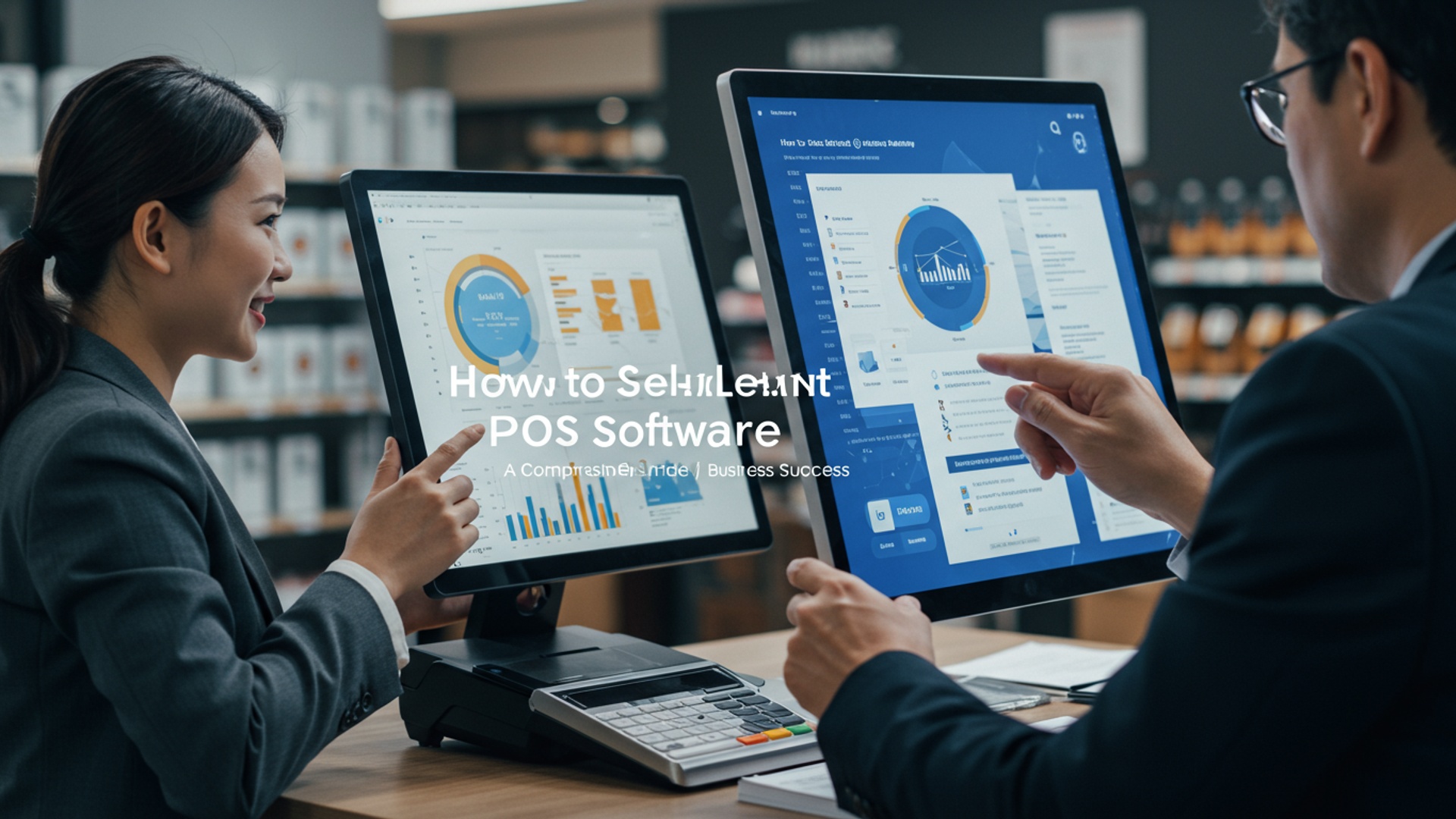
Understanding POS Software: More Than Just a Cash Register
In today’s dynamic business landscape, the term ‘Point of Sale’ (POS) has evolved far beyond the simple cash register. At its core, pos software is the digital system that processes transactions. its capabilities extend to managing nearly every aspect of a business, from inventory to customer relationships. Think of it as the central nervous system for your retail, restaurant, or service operation, integrating various functions to streamline efficiency and enhance the customer experience.
What is POS Software?
Traditionally, a POS system was a physical terminal where sales were rung up. Modern pos software, But, is a sophisticated application that can run on various hardware, including tablets, smartphones. traditional workstations. It’s designed to record sales, track inventory, manage customer data. generate critical business reports. Its primary function is to facilitate transactions. its true power lies in the data it collects and the operational insights it provides.
Evolution from Traditional Cash Registers
The journey from mechanical cash registers to advanced pos software has been transformative. Early electronic registers offered basic sales tracking. lacked integration with other business functions. Today’s cloud-based POS solutions offer unparalleled flexibility, allowing business owners to monitor sales and inventory in real-time from anywhere in the world. This evolution reflects a broader shift towards data-driven decision-making and interconnected business operations.
Core Functionalities of Modern POS Software
- Sales Processing
- Inventory Management
- Customer Relationship Management (CRM)
- Employee Management
- Reporting and Analytics
- Integrations
Efficiently handles cash, credit card, mobile payments. gift card transactions.
Tracks stock levels, manages variations (sizes, colors), automates reordering. reduces stockouts.
Builds customer profiles, tracks purchase history, manages loyalty programs. facilitates targeted marketing.
Schedules shifts, tracks hours, manages commissions. monitors sales performance.
Provides detailed insights into sales trends, popular products, peak hours. overall business performance.
Connects seamlessly with e-commerce platforms, accounting software, payment processors. other business tools.
Benefits for Businesses
- pos software
- pos software
- pos software
Identifying Your Business Needs: A Crucial First Step
Before diving into the myriad of options available, the most critical step in selecting pos software is a thorough assessment of your unique business needs. A one-size-fits-all approach rarely works, as different industries and business models have distinct requirements. This foundational analysis will guide your decision-making process, ensuring you invest in a system that truly serves your operational goals.
Industry-Specific Requirements
The type of business you operate heavily dictates the features you’ll need from your pos software.
- Retail
- Restaurants/Cafes
- Service Businesses (Salons, Spas, Gyms)
Requires robust inventory management, barcode scanning, loyalty programs. multi-store capabilities. For instance, a clothing store might prioritize features like size/color matrix tracking and easy return processing.
Needs table management, kitchen display system (KDS) integration, order customization, split checks. tip management. A fine-dining restaurant will have different requirements than a quick-service cafe, particularly around reservation systems and intricate menu configurations.
Benefits from appointment scheduling, client management, staff commission tracking. membership billing.
Current Pain Points and Operational Challenges
Reflect on the inefficiencies or frustrations your current system (or lack thereof) presents. Are you struggling with:
- Slow checkout lines?
- Inaccurate inventory counts leading to lost sales or excess stock?
- Difficulty tracking customer preferences or loyalty?
- Manual reconciliation errors with accounting?
- Lack of insightful sales reports?
Listing these pain points will help you prioritize the features that your new pos software must address. For example, if inventory discrepancies are a major headache, you’ll need a system with advanced inventory tracking and reporting features.
Future Scalability Needs
Consider your business’s growth trajectory. Do you plan to open more locations, expand into e-commerce, or introduce new product lines? Your chosen pos software should be scalable, capable of growing with your business without requiring a complete overhaul. A cloud-based system often offers greater scalability and flexibility for multi-location management.
Budget Considerations
Establish a realistic budget for both the upfront costs (hardware, setup) and ongoing expenses (software subscriptions, transaction fees, support). While cost shouldn’t be the sole determinant, it’s a crucial factor. Remember that investing in quality pos software can lead to significant savings through increased efficiency and reduced errors, offering a strong return on investment.
Team Size and Technical Proficiency
Evaluate your staff’s comfort level with technology. An intuitive, user-friendly interface is paramount for quick adoption and minimal training time. If your team is less tech-savvy, prioritize systems known for their ease of use and comprehensive training resources. The best pos software is only as good as its users’ ability to operate it effectively.
Key Features to Look for in POS Software
Once you have a clear understanding of your business needs, the next step is to evaluate the features offered by various pos software solutions. While core functionalities are standard, the depth and sophistication of these features, along with specialized capabilities, can vary significantly.
Essential Features and Their Importance
- Sales Processing and Payment Options
- Inventory Management
- Customer Relationship Management (CRM)
- Employee Management
- Reporting and Analytics
- Integration Capabilities
- E-commerce Platforms
- Accounting Software
- Payment Processors
- Marketing Tools
- Hardware Compatibility
- Security Features
Beyond basic cash and card payments, look for support for contactless (NFC) payments, mobile wallets (Apple Pay, Google Pay), gift cards. split tender options. Efficient payment processing is crucial for customer satisfaction.
This is often the backbone of effective pos software. Key features include real-time stock tracking, low-stock alerts, multi-location inventory, vendor management, purchase order generation. inventory counts. For businesses with complex inventory, like a grocery store, robust features for variations, bundles. matrix inventory are essential.
A good POS system allows you to build customer profiles, track purchase history, manage loyalty programs. collect feedback. This data is invaluable for personalized marketing and improving customer retention.
Features like time clock functionality, shift scheduling, performance tracking, commission management. role-based permissions help streamline HR operations and improve accountability.
Comprehensive reports on sales trends, product performance, employee performance, peak hours. customer demographics empower data-driven decisions. Customizable reports and dashboards are a significant advantage.
This is a game-changer. Your pos software should seamlessly integrate with other essential business tools.
(e. g. , Shopify, WooCommerce) for unified inventory and sales data.
(e. g. , QuickBooks, Xero) to simplify bookkeeping and financial reporting.
For secure and efficient transaction handling.
(e. g. , email marketing platforms) for targeted campaigns.
A lack of integration can lead to data silos and manual data entry, negating many benefits of a modern POS system.
Ensure the software is compatible with your preferred hardware (receipt printers, barcode scanners, cash drawers, card readers). Some providers offer proprietary hardware, while others are hardware-agnostic.
PCI compliance, end-to-end encryption for transactions, data backup. user access controls are non-negotiable to protect sensitive customer and business details.
Cloud-based vs. On-premise POS Software
This is a fundamental distinction with significant implications for cost, flexibility. management. Here’s a comparison:
| Feature | Cloud-based POS Software | On-premise POS Software |
|---|---|---|
| Data Storage | Remote servers, accessible via internet | Local servers within your business |
| Accessibility | Access from anywhere, on any device with internet | Limited to local network, often specific terminals |
| Upfront Cost | Generally lower (subscription model, minimal hardware) | Higher (server hardware, software licenses) |
| Ongoing Cost | Monthly/annual subscription fees | Maintenance, IT support, potential upgrade fees |
| Updates & Maintenance | Automated by vendor, included in subscription | Manual updates, often requiring IT staff or vendor visits |
| Scalability | Highly scalable, easy to add new users/locations | More complex and costly to scale |
| Data Security | Managed by vendor, professional data centers (usually robust) | Your responsibility, requires in-house IT expertise |
| Offline Capability | Some offer offline mode for limited functions, syncs when online | Fully functional without internet (but limited external access) |
The trend is strongly towards cloud-based pos software due to its flexibility, lower upfront costs. ease of management, especially for small to medium-sized businesses.
Comparing POS Software Solutions: Making an Informed Choice
With a clear understanding of your requirements and the key features, you’re ready to evaluate specific pos software solutions. This stage involves thorough research, vendor engagement. hands-on testing to ensure the chosen system aligns perfectly with your business goals.
Researching Popular Options
The market for pos software is vast, with numerous reputable providers catering to different niches. Some widely recognized solutions include:
- Square POS
- Shopify POS
- Toast POS
- Lightspeed Retail/Restaurant
- Vend (by Lightspeed)
Known for its ease of use, integrated payment processing. suitability for small businesses, often offering free basic software with transaction fees.
Ideal for businesses with a strong e-commerce presence, providing seamless integration between online and physical stores.
A leading solution specifically designed for restaurants, offering robust table management, online ordering. kitchen display system integration.
Offers advanced inventory management and analytics for both retail and hospitality sectors, suitable for growing businesses.
Another strong contender in retail, emphasizing inventory, customer loyalty. multi-store capabilities.
It’s beneficial to create a shortlist of 3-5 providers that seem to fit your initial criteria. Look beyond brand recognition and delve into their specific offerings.
Vendor Reputation and Support
The quality of a pos software solution extends beyond its features; the vendor’s reliability and support are equally critical. Consider:
- Customer Support
- Training Resources
- Uptime and Reliability
- Security Measures
What channels are available (phone, email, chat)? What are their hours of operation? Is 24/7 support available, especially for businesses with extended hours?
Do they offer comprehensive guides, video tutorials, or live training sessions?
Research the vendor’s track record for system stability and minimal downtime.
How do they protect your data and transactions? Are they PCI compliant?
A common pitfall is overlooking post-sale support. As one café owner, Maria, shared, “We chose a cheaper pos software initially. when we had an issue during a busy Saturday rush, their support was non-existent. We quickly realized the value of reliable customer service and switched to a provider with 24/7 phone support, even if it cost a bit more.”
Pricing Models and Hidden Costs
POS software pricing can be complex. Be aware of different models:
- Subscription Fees
- Transaction Fees
- Hardware Costs
- Setup and Installation Fees
- Add-ons and Integrations
Most cloud-based systems charge monthly or annual fees, often tiered based on features or number of terminals.
Payment processing fees are usually separate and can vary significantly. Some providers offer integrated payment processing with competitive rates.
Consider the cost of terminals, printers, scanners. card readers. Some vendors offer bundles, while others require you to purchase separately.
Some providers charge for initial setup, data migration, or on-site installation.
Certain advanced features or third-party integrations might incur additional costs.
Always request a detailed quote that outlines all potential expenses, both upfront and recurring, for at least a 2-3 year period.
User Reviews and Demos
Before making a final decision, leverage available resources:
- Read User Reviews
- Request a Demo
- Free Trials
Websites like G2, Capterra. Software Advice offer authentic user reviews that provide insights into real-world experiences with different pos software. Pay attention to comments on ease of use, customer support. specific features relevant to your business.
Most vendors offer free demos. Use this opportunity to see the software in action, ask specific questions. gauge its user-friendliness. Involve key staff members in the demo to get their feedback.
If available, take advantage of free trials to test the pos software with your own data and processes. This hands-on experience is invaluable for assessing fit.
During a demo, make sure to test scenarios relevant to your business. For a retail store, this might include processing a return, applying a discount, or checking inventory levels for a specific item. For a restaurant, it could involve splitting a bill or sending an order to the kitchen.
The Implementation Process: A Step-by-Step Guide
Once you’ve selected your ideal pos software, the implementation phase is critical for a smooth transition and successful adoption. This process requires careful planning, attention to detail. active participation from your team.
1. Data Migration and Setup
This is often the most time-consuming part. You’ll need to transfer existing business data into your new pos software.
- Product Data
- Customer Data
- Employee Data
- Hardware Configuration
Input all your products, including names, descriptions, SKUs, prices, categories. inventory levels. For large inventories, look for bulk import features, often via CSV files. Ensure accuracy to avoid future discrepancies.
Migrate existing customer insights, including contact details and purchase history if available. This is vital for continuity of loyalty programs and personalized service.
Set up employee profiles, roles, permissions. time clock data.
Install and configure your POS hardware (terminals, printers, barcode scanners, cash drawers). Ensure all components communicate correctly with the software.
Example CSV structure for product import:
SKU,ProductName,Category,Price,Quantity,Supplier,Barcode
1001,Organic Coffee Beans,Beverages,15. 99,50,CoffeeCo,123456789012
1002,Stainless Steel Mug,Kitchenware,12. 50,30,HomeGoods,234567890123
Always double-check imported data for errors before going live. A small error in a product price or inventory count can have significant downstream effects.
2. Staff Training
Effective training is paramount for successful adoption. Your staff are the primary users. their comfort and proficiency with the new pos software directly impact its effectiveness.
- Phased Training
- Hands-on Practice
- Role-Specific Training
- Resource Creation
Start with key supervisors or managers, then roll out training to the entire team.
Provide ample opportunities for staff to practice using the system in a non-live environment. Simulate common scenarios like sales, returns, discounts. order modifications.
Tailor training to different roles. Cashiers need to master sales processing, while managers might focus on reporting and inventory adjustments.
Develop internal cheat sheets or quick-reference guides for common tasks. Many pos software vendors also provide extensive online knowledge bases and video tutorials.
Encourage questions and address concerns openly. Employee buy-in is crucial. a well-trained team will embrace the new system rather than resist it.
3. Testing and Troubleshooting
Before the official launch, conduct rigorous testing to identify and resolve any issues.
- End-to-End Testing
- Edge Case Testing
- Hardware Testing
- Network Stability
Simulate complete transactions from start to finish, including payment processing, receipt printing. inventory updates.
Test unusual scenarios, such as returns without a receipt, partial payments, split tenders, or network outages.
Verify that all peripherals (scanners, printers, card readers) are functioning correctly and reliably.
Ensure your internet connection is robust, especially for cloud-based pos software. Have a backup plan for internet disruptions.
It’s often helpful to designate a “super user” who becomes an expert in the new system and can assist colleagues with minor issues during the initial phase.
4. Go-Live Strategy
The transition to the new pos software should be managed carefully to minimize disruption.
- Choose a Slow Period
- Phased Rollout
- Support On-site
- Backup Plan
If possible, launch during a less busy time of day or week to allow for adjustments.
For larger businesses, consider rolling out the system department by department or location by location, rather than a single, sweeping launch.
Have a dedicated support person (either from the vendor or an in-house expert) available on-site during the first few days to quickly resolve any immediate issues.
Always have a contingency plan. What will you do if the system goes down? Can you revert to a manual process temporarily?
One business owner, David, shared his experience: “When we launched our new restaurant pos software, we did it on a Tuesday morning, historically our slowest period. We had the vendor’s technician on-site for the first four hours, which proved invaluable for troubleshooting minor printer connection issues and clarifying menu modifications for our staff. It made the transition much less stressful.”
5. Post-Implementation Support
Implementation doesn’t end after go-live. Ongoing support is vital.
- Monitor Performance
- Gather Feedback
- Ongoing Training
- Vendor Relationship
Keep a close eye on system performance, transaction speeds. staff feedback.
Regularly solicit feedback from your team on what’s working well and what areas need improvement.
Offer refresher training sessions, especially as new features are released or new staff are hired.
Maintain an open line of communication with your pos software vendor for ongoing support, feature requests. issue resolution.
Maximizing Your POS Investment: Best Practices for Success
Implementing new pos software is a significant investment. To truly unlock its potential and drive business success, you must adopt best practices that go beyond mere functionality, turning raw data into actionable intelligence and operational excellence.
Regular Data Analysis for Informed Decisions
Your pos software is a goldmine of data. Don’t just collect it; review it. Regularly review the reports and analytics features to gain insights into:
- Sales Trends
- Product Performance
- Employee Performance
- Customer Behavior
Identify peak sales times, popular products. seasonal fluctuations to optimize staffing, inventory. marketing campaigns.
interpret which items are best-sellers and which are slow-movers. This can inform purchasing decisions, promotions. even menu or product line adjustments.
Track individual sales, average transaction values. efficiency to identify top performers and areas where additional training might be needed.
Leverage CRM data to comprehend customer preferences, average spend. loyalty program effectiveness. This allows for personalized marketing efforts.
For example, a retail store using their pos software analytics might discover that a specific brand of sneakers consistently sells out on weekends. This insight allows them to increase stock of that brand, schedule more staff during peak weekend hours. potentially offer a complementary product bundle (e. g. , socks with sneakers) to boost sales further.
Continuous Staff Training and Engagement
Technology evolves. so should your team’s skills. Ongoing training ensures your staff are always utilizing the pos software to its fullest potential.
- Refresher Courses
- New Hire Onboarding
- Feedback Loop
Periodically conduct training sessions to reinforce best practices and introduce new features.
Integrate comprehensive POS training into the onboarding process for all new employees.
Encourage staff to provide feedback on the system. They are on the front lines and can offer valuable insights into usability improvements or overlooked features.
Empowering your team with knowledge about the pos software not only improves efficiency but also boosts their confidence and job satisfaction. As industry experts at Forrester often highlight, user adoption is a critical factor in the ROI of any business software.
Leveraging Integrations to Create a Unified Ecosystem
The true power of modern pos software lies in its ability to integrate with other business applications, creating a seamless and efficient operational ecosystem.
- E-commerce Synchronization
- Accounting Software Connection
- Marketing Automation
If you have an online store, ensure your POS syncs inventory and sales data in real-time. This prevents overselling and provides a unified view of your business.
Automate the transfer of sales, expense. payment data to your accounting system (e. g. , QuickBooks, Xero). This saves hours of manual data entry and reduces errors, ensuring financial accuracy.
Integrate with email marketing or loyalty platforms to automatically segment customers based on purchase history and send targeted promotions.
Consider a small business that uses Shopify POS for in-store sales and Shopify for e-commerce. By integrating their pos software with their accounting software, they eliminate manual entry of sales data, drastically reducing the time spent on bookkeeping and freeing up resources for growth initiatives.
Staying Updated with Software Releases
POS software vendors frequently release updates, bug fixes. new features. Neglecting these updates means missing out on potential improvements, security enhancements. new functionalities that could benefit your business.
- Automatic Updates
- Review Release Notes
- Test New Features
Cloud-based systems often update automatically. Ensure you interpret the release schedule and any changes.
Take time to read release notes or announcements to interpret what’s new and how it might impact your operations.
If significant updates are rolled out, test them in a controlled environment before full adoption, if possible.
Robust Security Protocols
Protecting sensitive customer and business data is paramount. Your pos software is a key point of data collection, making security a top priority.
- PCI Compliance
- Strong Passwords and User Permissions
- Data Backup
- Monitor for Suspicious Activity
Ensure your POS system and payment processor are PCI DSS (Payment Card Industry Data Security Standard) compliant.
Enforce strong, unique passwords for all staff and configure role-based access to limit data exposure.
Verify that your vendor performs regular data backups (for cloud solutions) or implement your own robust backup strategy (for on-premise solutions).
Regularly review transaction logs and system activity for any anomalies.
By diligently applying these best practices, businesses can transform their pos software from a simple transaction tool into a powerful engine for operational efficiency, customer satisfaction. sustained growth.
Conclusion
Successfully selecting and implementing POS software transcends merely acquiring a new tool; it’s about strategically investing in your business’s future operational backbone. My personal advice is to always prioritize a thorough pilot program, even if it feels like an extra step. I’ve witnessed businesses save thousands by identifying workflow friction points in a controlled environment rather than during peak hours. Remember, today’s POS isn’t just for transactions; it’s evolving with AI-powered analytics, offering predictive insights into inventory and personalized customer experiences, a trend rapidly shaping retail. Beyond features, consider the human element of adoption. A seamless transition hinges on comprehensive staff training and clear communication, ensuring everyone from the cashier to the manager feels empowered, not overwhelmed. Embrace the agility of modern cloud-based solutions, which, as recent developments in remote work and omnichannel retail show, provide unparalleled flexibility. By diligently applying the principles outlined in this guide, you’re not just installing software; you’re unlocking a powerful engine for efficiency, growth. sustained business success. For deeper insights into choosing the right system, explore How to Choose the Best POS Software to Streamline Your Sales.
More Articles
How to Select the Perfect POS Software for Your Retail Business Needs
Mastering Cloud Based POS Software How to Boost Your Business Efficiency
How to Select the Perfect POS Billing Software for Your Business
How to Implement POS Software for Your Grocery Store A Complete Guide
FAQs
What exactly is POS software and why is it such a big deal for businesses?
POS software, or Point of Sale software, is the heart of your business transactions. It’s what processes sales, manages inventory, tracks customer data. generates vital sales reports. It’s a big deal because it streamlines operations, improves efficiency, helps you comprehend your sales patterns. ultimately enhances the customer experience, leading to better business decisions and growth.
Okay, I’m convinced. Where do I even begin when trying to pick the right POS system?
Starting off right means first understanding your own business inside out. Think about your specific needs: what kind of products or services do you sell? How many locations do you have? What’s your budget? What problems are you trying to solve? Once you have a clear picture of your requirements, you can start researching systems that align with those needs, rather than just picking the first one you see.
What are the absolute must-have features I should look for in a POS solution?
Beyond just processing sales, look for robust inventory management (tracking stock, reordering alerts), comprehensive reporting and analytics (sales trends, bestsellers), customer relationship management (loyalty programs, purchase history). employee management (time tracking, permissions). Scalability is also key – you want a system that can grow with your business without needing a complete overhaul down the line.
How much should I budget for POS software, including ongoing costs?
Budgeting for POS involves more than just the initial software price. Consider hardware costs (registers, scanners, printers), setup and installation fees, data migration. most importantly, recurring subscription fees (which are common for cloud-based systems). Also, factor in potential training costs and any third-party integration expenses. It’s smart to get a full breakdown of all potential costs before committing.
Will this new POS system play nice with my existing accounting or e-commerce platforms?
Absolutely! Integration capabilities are super essential. A good POS system should be able to connect seamlessly with your other essential business tools, like accounting software (e. g. , QuickBooks, Xero), e-commerce platforms (e. g. , Shopify, WooCommerce). even payroll systems. This creates a unified operation, prevents data silos. saves you a ton of manual data entry, making your life much easier.
So, I’ve picked one. What’s the implementation process usually like?
Once you’ve made your choice, implementation typically involves several steps. First, any necessary hardware is set up. Then, your existing product and customer data needs to be migrated into the new system. The software is installed and configured to your specific business rules. Crucially, extensive testing is performed to ensure everything works as expected before you ‘go live’. Don’t rush this phase; thorough testing prevents headaches later on.
After everything’s set up, how do I make sure my team actually uses it effectively?
User adoption is vital for success. The best way to ensure your team uses the new POS effectively is through comprehensive training. Provide clear, hands-on sessions for all staff, create easy-to-interpret reference guides. establish a clear channel for questions and support. Encouraging feedback and addressing any difficulties promptly will help your team feel confident and proficient with the new system.


